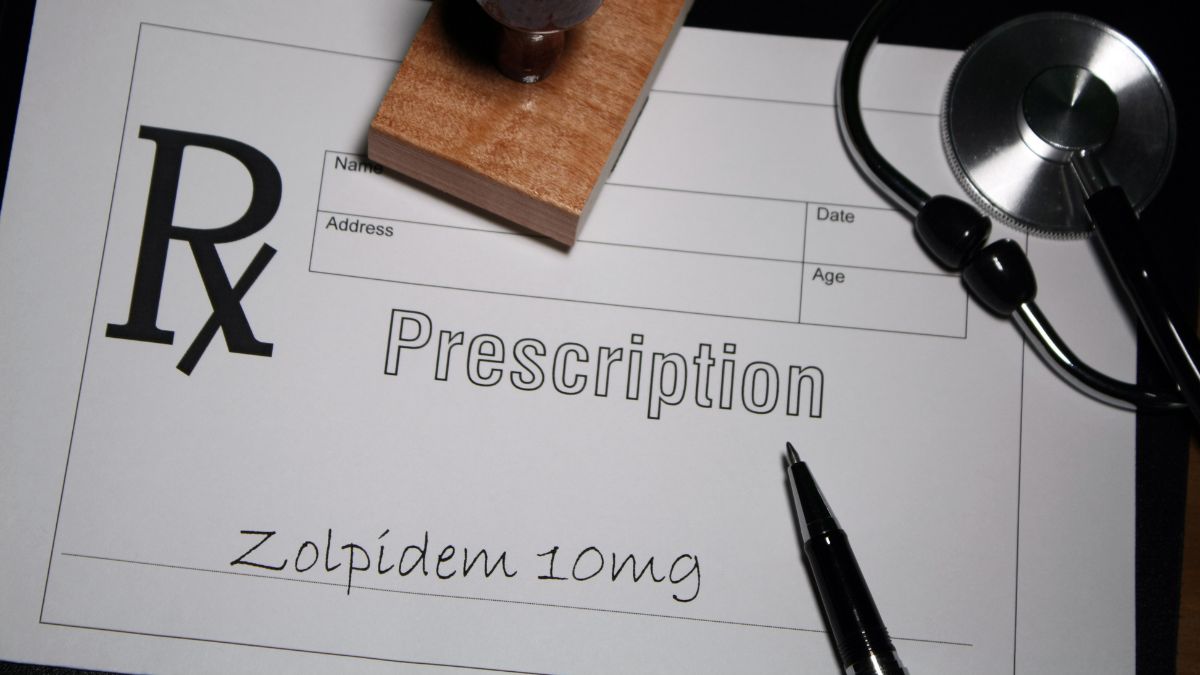MDMA stands for 3,4-methylenedioxy-methamphetamine; it is an illegal substance with stimulant and hallucinogenic effects. MDMA also goes by the street names of Ecstasy, Molly, Superman, X, and XTC, among many more.
MDMA was first developed in 1912 as a way to reduce a person’s appetite. But it was in the 1980s that it became popular as it began to be used among youth during dance parties, rave parties, and even music festivals. While MDMA can lead to momentary pleasant effects, it has great potential for misuse and leads to cognitive dysfunctions in the long run.
In this blog, we will discuss the relationship between MDMA and drug tests and what it means to test positive for MDMA on drug tests.
What Does MDMA Stand For?
MDMA stands for 3,4-methylenedioxymethamphetamine. It is a psychoactive drug that produces feelings of euphoria and altered perception by acting on the brain’s neurotransmitter systems. MDMA has become increasingly popular over the past few decades as it has been used in parties and rave culture settings. Its name is derived from the syllables of its chemical name.
What Does MDMA Do?
MDMA primarily works by increasing the activity of three important neurotransmitters in the brain. These are dopamine, serotonin, and norepinephrine. All three of these neurotransmitters play important roles in regulating energy levels, trust, appetite, sexual activity, sleep, emotions, and mood. When people take MDMA, they experience the drug’s energizing effects as well as significant changes in their perception of time, tactile experiences, and their own emotions.
Many people report feeling increased feelings of love, trust, and warmth. For this reason, MDMA is a popular party drug that is widely abused in clubs, raves, and other group events.
MDMA High Duration and Withdrawal Effects
When people take MDMA, they generally experience the short term effects — also known as the “high” — within about 30 minutes. These feelings of warmth, euphoria, openness, and energy can last between 3 to 6 hours. However, it is important to recognize that ecstasy stays in your system for far longer than the initial effects are perceived. In fact, even after molly has been processed by the body, it can continue to affect a person’s brain, body functions, and behavior.
MDMA’s short term positive effects are quickly followed by emotionally and physically distressing withdrawal symptoms. These include:
- Muscle cramping and tension
- Jaw clenching that can feel uncontrollable
- Dry mouth
- Nausea
- Vision problems (such as increased light sensitivity and blurred vision)
- Sweating
- Decreased appetite
- Anxiety
- Depression
- Decreased libido
- Irritability
- Sleep problems
- Attention and memory problems
- Impulsiveness and aggression
The half-life of MDMA is relatively short, clocking in at about 8 or 9 hours. This means that after 9 hours, most people have processed half of the MDMA they have consumed. However, eliminating the remaining half takes much longer than the first half. For this reason, withdrawal symptoms after a bout of MDMA abuse can often last for several days, sometimes up to a week.
MDMA Drug Test Types & Detection Windows
Different drug tests catch MDMA at varying stages—urine for recent use, blood for immediate detection, hair for long-term patterns. Each has unique strengths for employers, parents, or sober living accountability.
Urine Tests (Most Common): Detects MDMA metabolites 2-4 days after use. Affordable kits available at pharmacies, ideal for standard screening.
Blood Tests (Most Accurate): Spots MDMA 1-2 days max. Requires a medical professional; used for recent suspicion or legal cases.
Hair Tests (Longest Window): Reveals use up to 90 days. Expensive but precise for chronic patterns, metabolites are embedded in follicles.
Let’s go through these tests in detail:
Call Design for Recovery to Begin Your Healing Journey!
Reach out to our team to discuss sober living options and next steps toward a healthier routine.
How Long Does MDMA Stay in Urine?
MDMA can be detected in urine for up to 3 days after a person has taken the drug. Urine drug tests are one of the most commonly used methods for detecting MDMA in an individual’s system. The reliability, accuracy, and cost-effectiveness of the MDMA urine screening test make it a popular choice for employers, law enforcement, and parents concerned about their children’s drug use.
How Long Does MDMA Stay in Blood?
MDMA can also be detected in a person’s blood. However, this type of test is not as common as urine testing due to the difficulty of collecting and preserving blood samples for analysis. Generally speaking, MDMA will show up in someone’s bloodstream for about 12 hours after taking it. After that, it can still be detected for up to 24 hours.
How Long Does MDMA Stay in Hair?
MDMA can be detected in a person’s hair for up to 90 days after taking the drug. Hair testing is not commonly used due to its complexity and costliness compared to other tests. However, it is an accurate and reliable way to detect MDMA abuse over longer periods of time.
It is also possible to identify approximately when a person last abused MDMA simply by identifying which section of the hair follicle contains MDMA metabolites. While hair tests have many advantages, they are relatively uncommon because they are expensive and resource-intensive.
MDMA in Urine
Urine tests are one of the most affordable and widely used types of drug tests. They can be purchased easily from drug stores. Most general urine test kits test for MDMA and specialized urine drug test kits that are designed specifically to test for MDMA can also be purchased. Urine test kits measure MDMA metabolites in the urine. Metabolites are chemical byproducts — or traces — produced while a person’s body processes MDMA. These metabolites remain present in the urine for approximately 2 to 4 days. After 4 days, MDMA is rarely detectable in the urine.
MDMA in Blood
Blood tests are more expensive than urine tests, and they generally need to be administered by a medical professional. They are often more accurate than urine tests. However, blood tests for MDMA have somewhat shorter detection windows than MDMA urine tests. MDMA can generally be detected in the blood for only about 1 or 2 days. This is because MDMA is eliminated from the blood rather quickly as the body works to metabolize and eliminate it through the urine. For this reason, blood tests are generally not ideal ways of detecting MDMA usage unless it is suspected that a person has abused MDMA in the last day or two.
Factors That Affect MDMA Drug Tests
The window of detection and the accuracy of MDMA detection vary considerably. This is because the way people take MDMA has a significant effect on the viability of MDMA testing. More individual factors, such as a person’s overall body composition, also affect detection windows. These factors include:
Contact Design for Recovery Today!
Fill out our quick form to connect with a peer mentor and learn how our sober living community supports accountability, structure, and personal growth in recovery.
Taking other substances
Certain medications, such as trazodone, can lead to false positives on MDMA tests. Other substances can slow the body’s ability to process and metabolize MDMA. For this reason, it is essential to inform test administrators if you have taken any other medication or recreational drug recently.
Route of administration
There are multiple ways of taking MDMA. People who snort MDMA instead of taking it in pill form absorb the drug more quickly. Not only do they experience effects more rapidly, but the drug is also eliminated from their body more quickly. As a result, individuals who snort MDMA often have shorter detection windows for drug tests.
Body type
Individuals who have more fatty tissues in their bodies can more easily accumulate drug metabolites. People with lower body mass index (BMI) often have shorter detection windows, so they may test negative despite consuming MDMA relatively recently.
Dosage
When MDMA is taken in larger doses, it stands to reason that it takes longer for the body to process the drug. One-time users often eliminate the drug more quickly and have shorter detection windows. It is important to keep in mind, however, that even people who abuse MDMA only on one occasion often take multiple doses in order to extend their “high.”
Metabolism
Many factors affect how quickly people metabolize MDMA. These include activity levels, age, sex, and even certain medical conditions. Some people also just tend to metabolize certain drugs more rapidly or more slowly than others.
Overall health
Many health conditions affect how quickly people metabolize MDMA. Individuals with liver or kidney conditions, for instance, have bodies that struggle to break down MDMA. They may have far longer detection windows. However, it is also sometimes the case that these individuals take longer to produce MDMA metabolites after consuming the drug.
Getting Help for MDMA Addiction
If you or a loved one is struggling with MDMA abuse or addiction, it is essential to seek help right away. Most drug abuse treatment centers are well-equipped to deal with this sort of situation.
Design for Recovery, a structured sober living for men located in West Los Angeles, is a safe, supportive, and trigger-free environment where men can do the essential work of rebuilding their lives. Design for Recovery maintains a routine drug screening policy to promote accountability and a substance-free environment.
Our structured sober living environment encourages residents to address the challenges and habits that contributed to past substance use through peer support and daily accountability. Through daily routines and peer interactions, residents build life skills and practices that support long-term sobriety.
If a person shows signs of overdose, contact emergency medical services immediately. For ongoing support after detox or treatment, consider sober living as a next step.
- What Does MDMA Stand For?
- What Does MDMA Do?
- MDMA High Duration and Withdrawal Effects
- MDMA Drug Test Types & Detection Windows
- How Long Does MDMA Stay in Urine?
- How Long Does MDMA Stay in Blood?
- How Long Does MDMA Stay in Hair?
- MDMA in Urine
- MDMA in Blood
- Factors That Affect MDMA Drug Tests
- Taking other substances
- Route of administration
- Body type
- Dosage
- Metabolism
- Overall health
- Getting Help for MDMA Addiction
Begin Lasting Sobriety Now!
Frequently Asked Questions
Yes, molly frequently shows up on a drug test, especially if it is taken as soon as possible. However, the window of detection and accuracy varies depending on a variety of factors such as body type, dosage, route of administration, and metabolism.
MDMA drug tests are most commonly referred to as “ecstasy” or “molly” drug tests. This is because these are the two most common street terms for MDMA. Tests may also be referred to as “MDMA screen,” “amphetamine/MDMA assay,” and “urine amphetamine / MDMA panel.” They can detect MDMA metabolites in urine, blood, and saliva samples.
Individuals with higher body fat content are more likely to accumulate drug metabolites and have longer detection windows than those with lower BMI. Additionally, people who take MDMA in pill form rather than snorting it typically have longer detection windows. Dosage, metabolism and overall health can also affect MDMA detection windows.
It depends on the type of drug test. Urine tests are the most common, and they can detect MDMA metabolites for up to 3 days after use. Hair tests have much longer detection windows, up to 90 days. Other testing methods, such as saliva tests and blood tests, also exist but are not used as often.
The amount of time MDMA stays in your system depends on how much you took, the route of administration, body type, metabolism, and overall health. Urine tests are able to detect MDMA metabolites for up to 3 days after use. However, hair tests have longer detection windows and can detect MDMA for up to 90 days after consumption.
MDMA drug screen urine is a type of test used to detect the presence of MDMA in a person’s system. It can be used to determine whether an individual has recently consumed the drug and how much was taken. It usually involves testing a urine sample for traces of MDMA metabolites, which can remain detectable in the body for up to three days.
If you want to stop abusing drugs or alcohol but you don’t want to be miserable in the process, you’re not alone. Contact Design for Recovery today. It’s never too late to turn your life around.
NIDA. 2020, June 15. MDMA (Ecstasy/Molly) DrugFacts. Retrieved from https://nida.nih.gov/publications/drugfacts/mdma-ecstasymolly on 2022, December 25
Lopez MJ, Tadi P. Drug Enforcement Administration Drug Scheduling. [Updated 2022 Jun 23]. In: StatPearls [Internet]. Treasure Island (FL): StatPearls Publishing; 2022 Jan-. Available from: https://www.ncbi.nlm.nih.gov/books/NBK557426/
Abraham TT, Barnes AJ, Lowe RH, Kolbrich Spargo EA, Milman G, Pirnay SO, Gorelick DA, Goodwin RS, Huestis MA. Urinary MDMA, MDA, HMMA, and HMA excretion following controlled MDMA administration to humans. J Anal Toxicol. 2009 Oct;33(8):439-46. doi: 10.1093/jat/33.8.439. PMID: 19874650; PMCID: PMC3159864.
Madry MM, Steuer AE, Hysek CM, Liechti ME, Baumgartner MR, Kraemer T. Evaluation of drug incorporation into hair segments and nails by enantiomeric analysis following controlled single MDMA intakes. Anal Bioanal Chem. 2016 Jan;408(2):545-56. doi: 10.1007/s00216-015-9130-3. Epub 2015 Oct 31. PMID: 26521178.







Written By
David Beasley